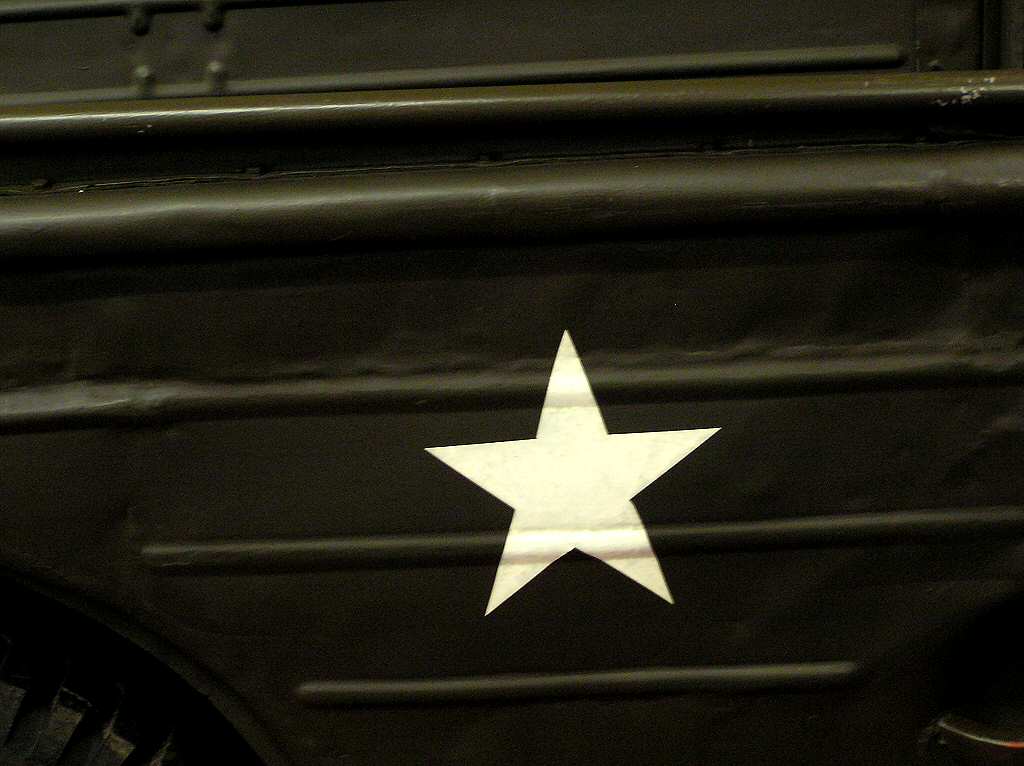|
|
|
How to download the photographic
computer wallpaper www.MooreWallpaper.com Tell your friends about us, e-mail them! |
WW2 DUKW (duck) amphibious military troop and cargo landing vehicleThe United States military realized it would have to have the ability to make an amphibious landings of troops and cargo in the Pacific as well as Europe. They issued a requirement for a vehicle that was agile, manoeuvrable and could fight their way through choppy oceans, with huge breakers, and exit the water onto soft sand without losing traction. The US National Defense Research Committee and the Office of Scientific Research and Development originally designed the DUKW. It was originally rejected by the US Military.but they changed their minds when a DUKW rescued the crew of a US Coast Guard patrol craft which had ran aground on a sandbar near Provincetown, Massachusetts in high seas. By luck an experimental DUKW was in the area. It had been scheduled to give a demonstration to the sceptical US Military chiefs a few days later. The DUKW rescued seven stranded coast guardsmen in winds up to 60 knots (110 km/h), rain, and heavy surf. These conditions prevented conventional craft from undertaking a rescue, but the DUKW had no trouble. General Motors first built this amphibious military landing vehicle in 1942.This front wheel drive, double rear wheel axle 2˝ ton truck was enclosed in a water-tight shell. Most people think that it got its name DUCK from its ability to move on land and in the water but the real reason behind the name is that the military identity codes were assigned to the vehicles function and by coincidence the letters it produced sounded like DUCK. The letter D meant that the vehicle was designed in 1942 (D). The letter U meant that it was a utility/amphibious Vehicle. The letter K meant that it was front wheel drive (GMC still uses this code on their trucks today) and the letter W meant that it had two rear driving axles. DUKW. During World War II, the US produced 20,000 Ducks, of which some 2,000 were supplied to the British under the terms of Lend-Lease. it was the solution to the problem facing the Allies when dock facilities in landing areas were non-existent. The DUKW was first used operational in March, 1943 to carry ammunition directly from anchored ships to shore when the U.S. landed Army troops on Noumea, New Caledonia. Some DUKWs were modified to carry 4.5-inch rockets. General Eisenhower and Patton were impressed by its capabilities. For the Sicilian landings in 1943 over 1,000 DUKWs were used. About 2,000 DUKWs were used in Operation Overlord, the landings in Normandy. They brought about 40% of all supplies landed a shore between 6th June and 1st September 1944. At the end of March, 1945. 370 DUKWs were used to move men and supplies across the Rhine River. This was the last amphibious operation of the DUKWs during WWII. The DUKW was shaped like a boat and had a hollow, airtight body for buoyancy. It could carry 25 fully equipped troops as well as a cargo load of 5,350 lbs. It had a range of 50 miles on water and 220 miles on land. It had a top speed of 6 mph in water and 55 mph on land. It used a single propeller to sustain forward momentum. It had a five-speed transmission with a two-speed transfer case, giving it 10 forward speeds and two in reverse.It weighed .5 tons empty and was 31 feet long. It could clear obstacles that were 18 inches high and climb up gradients up to 60%. It was equipped with a hull pump that could move 260 gallons of water a minute and a hand pump that could move 50 gallons a minute. It also had an advanced all terrain tyre inflation system comprising a two-cylinder air compressor and an air storage tank. This enabled the driver to inflate or deflate any one of the six tyres or all of them at the same time from the dashboard to cope with the different ground conditions to enable the Duck to get the best grip whether it was travelling on Tarmac, sand, coral or mud. After WWII, the DUKWs were sent on active service once more to the 1956 Korean war. The DUKWs continued serving the United States Army until the mid-1960s. Although the DUKW was used mainly for military purposes, many have been used by Police departments, fire stations and rescue units. Many DUKWs are now used to give rides to tourists in cities around the world like the DUCK tours of London. |
www.MooreWallpaper.com Add our site to your 'Favorites' list now!
![]()
![]() (Website
design by Craig
Moore, London, England)
(Website
design by Craig
Moore, London, England)
